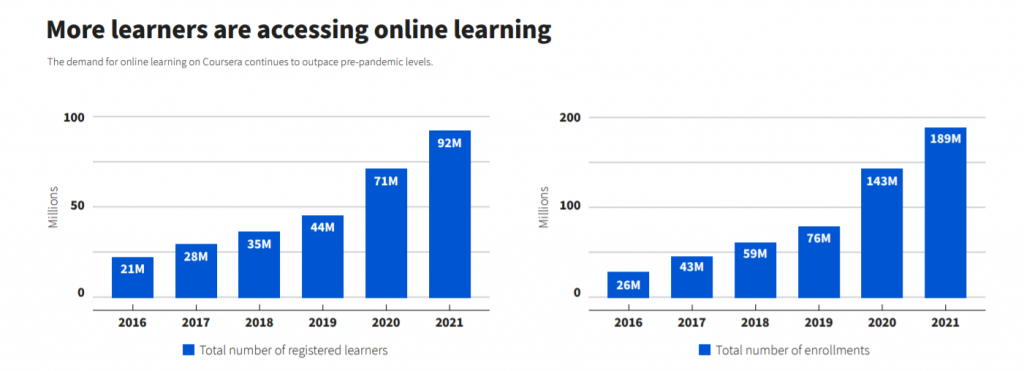
Online learning has been steadily gaining popularity over the past decade, but the COVID-19 pandemic has accelerated its adoption at an unprecedented rate. In 2020, universities around the world were forced to switch to online learning almost overnight, causing a seismic shift in the way students learn. In this article, we will explore the rise of online learning at universities and examine the statistics and figures that illustrate this trend.
1. The Growth of Online Learning

Online learning has been growing rapidly over the past decade. According to a report by the National Center for Education Statistics, the number of students enrolled in distance education courses at degree-granting postsecondary institutions increased from 2.3 million in 2007 to 6.7 million in 2018. This represents a growth rate of over 190% in just 11 years.
2. The Impact of COVID-19

The COVID-19 pandemic has had a significant impact on the growth of online learning. According to a survey conducted by Inside Higher Ed, 90% of colleges and universities in the United States moved to remote learning in the spring of 2020. This shift to online learning has been a challenging one for both students and faculty, but it has also opened up new opportunities for learning and collaboration.
3. Online Learning Technologies

The growth of online learning has been facilitated by the development of new technologies. Learning management systems (LMS) such as Blackboard, Canvas, and Moodle have become the backbone of online learning, providing students with access to course materials, assignments, and assessments. Video conferencing tools such as Zoom and Microsoft Teams have also become essential for remote learning, allowing students to participate in live lectures and discussions.
Advantages and Disadvantages of Online Learning

Online learning has many advantages, including flexibility, accessibility, and convenience. Students can learn at their own pace and on their own schedule, which can be particularly beneficial for those who work or have other commitments. However, online learning also has its disadvantages. It can be difficult for some students to stay motivated and engaged in an online environment, and it can be challenging for instructors to provide personalized feedback and support.
After Education we’re here for you

“Ready to Shape Your Future? Join Our Cutting-Edge Platform for Personalized Career Opportunities Today!
As you’ve discovered in this article, the landscape of higher education is rapidly evolving, with online learning leading the charge. However, our platform connects you with invaluable career prospects. Imagine catching the eye of potential employers – in one seamless experience.
Say farewell to traditional boundaries and welcome a world of endless possibilities. Our platform it’s a bridge to your dream career. Through strategic partnerships with leading employers, we bring job opportunities right to your fingertips, ensuring your journey is a seamless one.
The Future of Online Learning

Online learning has been growing steadily over the past decade, but the COVID-19 pandemic has accelerated its adoption at an unprecedented rate. The growth of online learning has been facilitated by new technologies, including learning management systems and video conferencing tools. While online learning has many advantages, it also has its challenges. However, the future of online learning is bright, and it will continue to evolve and transform the way students learn.
